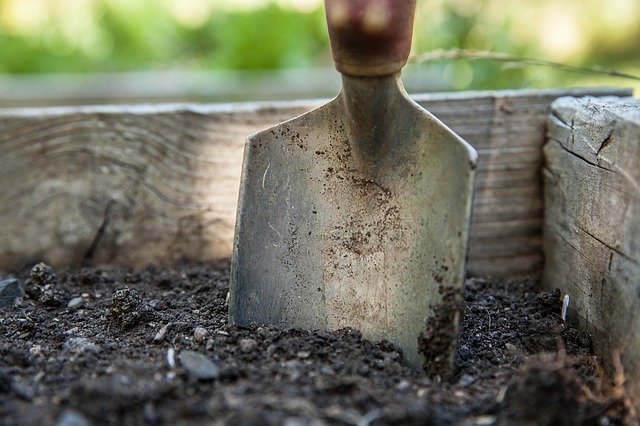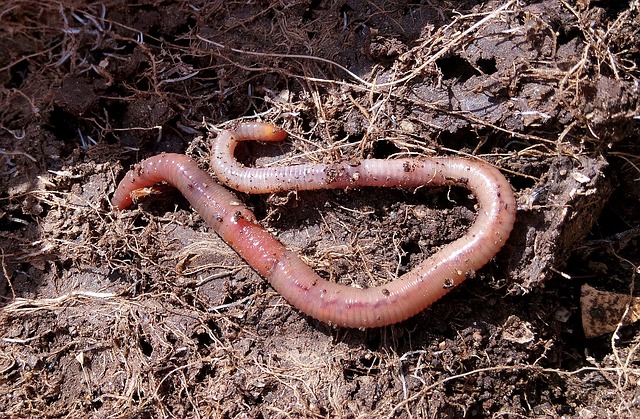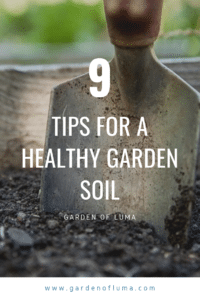Fertile Garden Soil: 9 Tips for a Healthy Soil

We all know those places where the ground is fertile enough to just pop a seed into it, add some water, and watch it grow. Unfortunately, many of us don’t have the luxury of having fertile soil readily available for our gardening needs, especially those of us living in urban settings. So, how can we create a soil that is optimal for growing?
What Makes a Fertile Soil?
A soil that provides all the needed nutrients, while allowing for proper aeration for the root system, and retaining the right amount of moisture for plant hydration is considered fertile soil.
When I think of some of the presenting problems with my climates soil structure, which is mainly a clay type soil, it tends to be challenges with poor drainage, high PH, and a lack of organic matter.
Does Soil Really make a Difference?

It absolutely does! There are many different factors that go into healthy soil. Things like salinity levels, tilth, nutrient availability, organic matter, compaction, PH, all play a part.
Try buying a cheap bag of soil and growing without adding anything. Good Luck! Plant a blueberry in our native clay soil with high alkalinity. Good Luck! The list goes on and on, so as you can see soil quality matters.
Simple Tips for Creating Fertile Soil for Gardening
Even though you may not be working with the perfect soil, there are ways to help make it better. Here are some surefire tips for improving the quality of your soil.
Know What You’re Working With
If you’re new to gardening in your area, you may not have an understanding of what you’re dealing with when it comes to your soil. This can also be true when moving to a new area.
I moved from the Midwest to the Southwest and the soil conditions are much different. It took me a few trials and errors before I began to gain an understanding of what works. Talking with other gardeners in your area that are having success can help a lot.
There are many avenues through social media to readily connect with other local gardeners. Another idea is to have a soil test done. This will tell you everything that is right and deficient with your soil.
Add Organic Material
This is huge in my area. Living in the desert, we don’t have a lot of naturally provided organic material to our soil. If you’ve ever walked through a forest, you’ll see a layer of dead leaves, old logs, and dead plants naturally breaking down to sustain the soil.
Trees and plants in these settings have the nutrients being cycled to them where they don’t need supplements. Adding materials like compost, mulch, manure, and worm castings is critical for building a fertile soil in soils that are lacking organic matter.
RELATED POST: Should I Use Manure for Fruit Trees

Crop Rotation
It’s a good idea to plant different crops or switch the planting areas from where you planted last season. For example, if you have two raised beds and planted tomatoes in one and watermelon in the other, switch boxes next year if planting the same crops.
Different plants have different nutrient needs and leech out different things from the soil. Some plants may be heavy nitrogen feeders and leave very little nitrogen in the soil.
Grow in a Raised Bed or Container
When planting in a raised garden bed or container you have total control of the soil. This is my main method for gardening in the Phoenix Arizona area. I was able to fill my raised beds with high-quality soil and now it’s just about maintenance every season.
I recommended finding a local company that produces high-quality soil and buy it by the cubic yard. A lot of the bagged soils from big box stores have been sitting for long periods of time and have no life to them. If you get cheap bagged soil, it’s going to produce crap results. Believe me, I’ve tried in my early gardening days.
Here are some of the different types of soil for sale.
- Potting Mix– Lacks organic matter and is designed to hold water. Over time it starts to have a difficult time absorbing water when it dries out, so organic matter should be regularly applied. It usually has higher amounts of peat moss.
- Garden Soil or Top Soil- Usually is a mix of compost, sand, and ground up rock. This is meant for use in the ground.
- Sandy Loam– This soil also contains silt and clay with sand. It promotes a good level of drainage and is recommended for growing edibles.
RECOMMENDED POST: Raised Bed Gardening for Hot Climates

Minimize Compaction
You want your soil to be somewhat loose to allow for oxygen and air. Walking on the area that you plant can compact the soil. As the soil gets dense it makes it hard for the roots to penetrate and be able to breathe. If you’re in a hot, dry climate the soil can compact with constant sun exposure and drought conditions.
Plants and foliage can maintain a canopy so the soil below stays workable. Clearing an area and letting it sit for long periods of time without water is going to cause compaction.
Put the Tiller Away
Using a rototiller kills worms, beneficial organisms, and tears up the fungal filaments. The structure of the soil becomes compromised and reduces aeration. If you need to till your soil, lightly turn it with a spade fork while mixing compost and quality soil in.
The lasagna method is a great way to build your soil over time, by layering with organic material and slowly allowing the microorganisms to do the work.
Promote Soil Life
If you’ve ever dug your hand in some rich, black soil, you’ve probably also pulled up a handful of worms with it. Adding the organic material that was previously discussed promotes soil life.
Things like worms, nematodes, fungi, insects, and bacteria are all beneficial organisms that enhance soil quality. These organisms feed on the organic matter and material in the soil. Worms excrete castings that are full of nutrients.

Amendments
There are certain things that can be applied to help improve the soil. Check out my post here on How to Improve Clay Soil for Fruit Trees. Things like soil sulfur can be applied periodically to help reduce PH levels over time.
Lime can be added to increase PH. Gypsum can be used as a conditioner to loosen compacted soils to help improve drainage. It can also aid in flushing salts away from the root zone.
Enhance Mychorrizal Fungi
Mychorrizal Fungi helps support a healthy root system. It creates a web-like system that helps aid root systems in taking up nutrients and supplying water. Mychorrizal Fungi helps strengthen the structure of the soil for aerations and protects plants from various fungal diseases.
Mychorrizal Fungi can naturally be found in healthy soil, but can also be inoculated. Take a look at this product from Xtreme Gardening over on Amazon.
